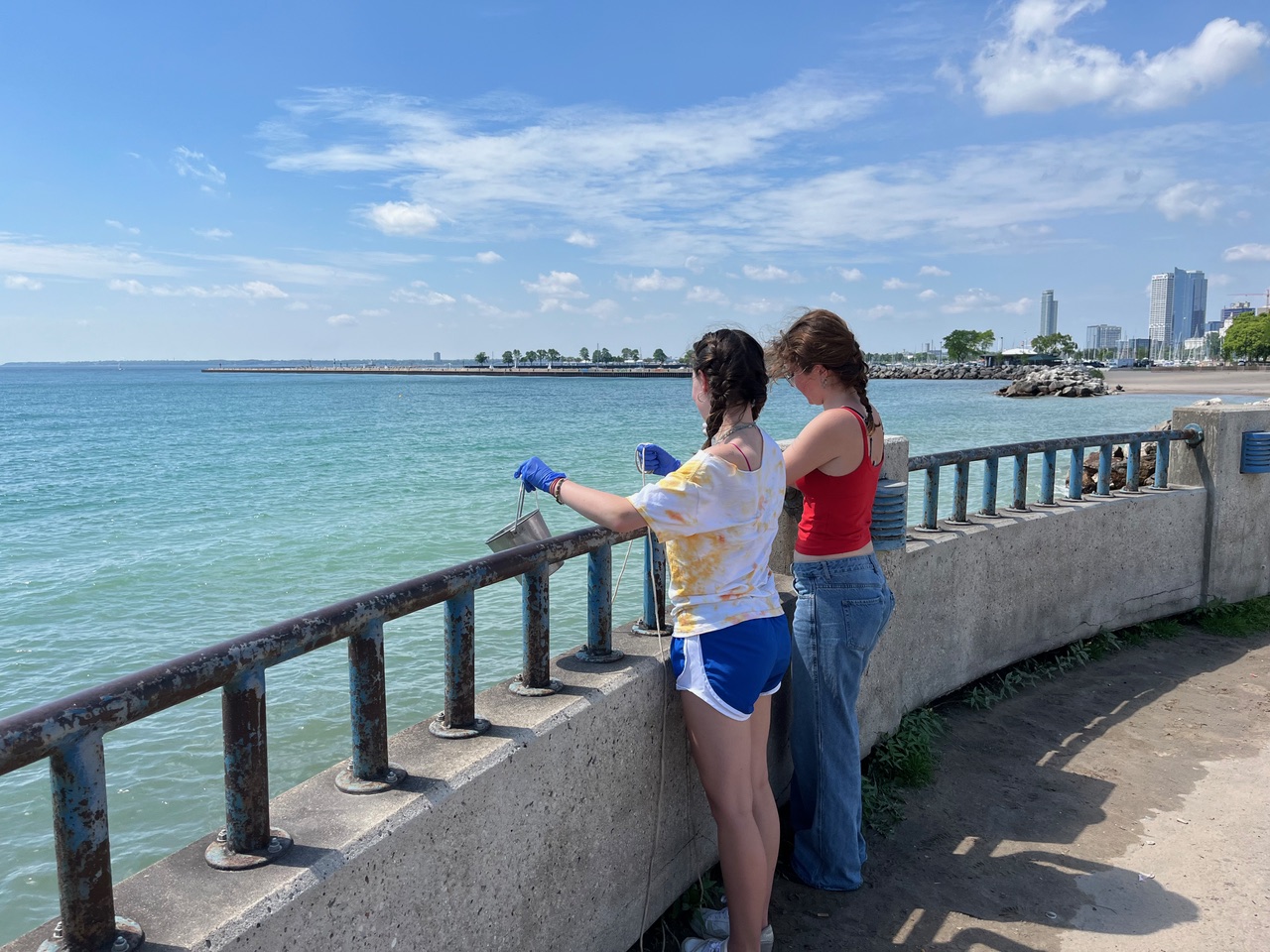Wastewater effluent from more than 30 million people is released into the Great Lakes every single day. And while water treatment plants do a great job of catching a lot of pollutants, there’s also plenty that gets through, including a host of pharmaceutical drugs.
What effect these drugs might have on the lakes’ biota is difficult to determine. Little is known about where – and how fast – these drugs are dispersed in lakes, and whether they are broken down quickly or persist in the environment.
A research team backed by Wisconsin Sea Grant may have found the tool for the job. Graduate student Michael Montenero and assistant professor James Waples, with UW-Milwaukee’s School of Freshwater Sciences, used medically-derived iodine-131, a radioactive pharmaceutical used in medical imaging and thyroid cancer treatment, to track the trajectory and speed of Milwaukee wastewater transport in Lake Michigan. Their findings were just published in the journal of Water Research.
People treated with iodine-131 eventually void it in urine, where it is then only partially removed in a sewage treatment plant. Most of the radioactive iodine is released to the lake, and because iodine is a micronutrient, it is actively taken up by aquatic plants – including the nuisance algae Cladophora.
Waples’ team collected Cladophora samples and found iodine-131 along 40 kilometers of shoreline and as far as 8 kilometers off shore.
“Because iodine-131 is radioactive, we know exactly how fast it decays – it’s like a clock,” said Waples. “We can combine our information on how far the radioactivity has spread with how quickly it decays to calculate not only where sewage effluent is transported in the lake, but also how fast it’s moving.”
For now, this information will help scientists know where to look for drug effects in the lake. For instance, Waples suggested that Krassimira Hristova, a Marquette University professor whose work on the proliferation of antibiotic resistant bacteria in the Milwaukee Harbor is also being funded by Wisconsin Sea Grant, might be able to use the tracer to hone her research sites.
In future research, the tracer may become especially useful for understanding how other sewage contaminants behave in the lake. By measuring the ratio of iodine-131 to pharmaceuticals found in the water, researchers may be able to get a handle on how quickly these other drugs are degraded in the environment.
Waples stressed that the release of iodine-131 and other pharmaceuticals in wastewater effluent isn’t just a Milwaukee issue—it’s happening in every town that discharges wastewater into a lake, stream, river or ocean.
“The amount of radioactivity in Lake Michigan associated with iodine-131 isn’t dangerous,” Waples said, “but it’s a good example of how big a footprint we leave on the environment with everything we do.”





